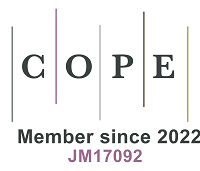REFERENCES
1. Benner CL, Bayona JM, Caka FM, et al. Chemical composition of environmental tobacco smoke. 2. Particulate-phase compounds. Environ Sci Technol 1989;23:688-99.
2. Jaakkola MS, Jaakkola JJ. Assessment of exposure to environmental tobacco smoke. Eur Respir J 1997;10:2384-97.
3. Eatough DJ, Hansen LD, Lewis EA. The chemical characterization of environmental tobacco smoke. Environ Technol 1990;11:1071-85.
4. Brasche S, Bischof W. Daily time spent indoors in German homes--baseline data for the assessment of indoor exposure of German occupants. Int J Hyg Environ Health 2005;208:247-53.
5. Klepeis NE. An introduction to the indirect exposure assessment approach: modeling human exposure using microenvironmental measurements and the recent national human activity pattern survey. Environ Health Perspect 1999;107:365.
6. Lioy PJ, Freeman NC, Millette JR. Dust: a metric for use in residential and building exposure assessment and source characterization. Environ Health Perspect 2002;110:969-83.
7. Glytsos T, Ondráček J, Džumbová L, Kopanakis I, Lazaridis M. Characterization of particulate matter concentrations during controlled indoor activities. Atmos Environ 2010;44:1539-49.
8. Wallace L, Ott W. Personal exposure to ultrafine particles. J Expo Sci Environ Epidemiol 2011;21:20-30.
9. Daisey JM. Tracers for assessing exposure to environmental tobacco smoke: what are they tracing? Environ Health Perspect 1999;107:319.
10. Lakind JS, Jenkins RA, Naiman DQ, Ginevan ME, Graves CG, Tardiff RG. Use of environmental tobacco smoke constituents as markers for exposure. Risk Anal 1999;19:359-73.
11. Petrick L, Destaillats H, Zouev I, Sabach S, Dubowski Y. Sorption, desorption, and surface oxidative fate of nicotine. Phys Chem Chem Phys 2010;12:10356-64.
12. Apelberg BJ, Hepp LM, Avila-Tang E, et al. Environmental monitoring of secondhand smoke exposure. Tob Control 2013;22:147-55.
13. Bi X, Sheng G, Feng Y, Fu J, Xie J. Gas- and particulate-phase specific tracer and toxic organic compounds in environmental tobacco smoke. Chemosphere 2005;61:1512-22.
14. Destaillats H, Singer BC, Lee SK, Gundel LA. Effect of ozone on nicotine desorption from model surfaces: evidence for heterogeneous chemistry. Environ Sci Technol 2006;40:1799-805.
15. Aquilina NJ, Havel CM, Cheung P, et al. Ubiquitous atmospheric contamination by tobacco smoke: Nicotine and a new marker for tobacco smoke-derived particulate matter, nicotelline. Environ Int 2021;150:106417.
16. Jacob P 3rd, Goniewicz ML, Havel CM, Schick SF, Benowitz NL. Nicotelline: a proposed biomarker and environmental tracer for particulate matter derived from tobacco smoke. Chem Res Toxicol 2013;26:1615-31.
17. Sleiman M, Gundel LA, Pankow JF, Jacob P 3rd, Singer BC, Destaillats H. Formation of carcinogens indoors by surface-mediated reactions of nicotine with nitrous acid, leading to potential thirdhand smoke hazards. Proc Natl Acad Sci U S A 2010;107:6576-81.
18. Whitehead TP, Havel C, Metayer C, Benowitz NL, Jacob P 3rd. Tobacco alkaloids and tobacco-specific nitrosamines in dust from homes of smokeless tobacco users, active smokers, and nontobacco users. Chem Res Toxicol 2015;28:1007-14.
19. Jacob P 3rd, Benowitz NL, Destaillats H, et al. Thirdhand smoke: new evidence, challenges, and future directions. Chem Res Toxicol 2017;30:270-94.
20. Brown BG, Borschke AJ, Doolittle DJ. An analysis of the role of tobacco-specific nitrosamines in the carcinogenicity of tobacco smoke. Nonlinearity Biol Toxicol Med 2003;1:179-98.
21. Cogliano VJ, Baan R, Straif K, et al. Preventable exposures associated with human cancers. J Natl Cancer Inst 2011;103:1827-39.
22. IARC Working Group on the Evaluation of Carcinogenic Risks to Humans. Smokeless tobacco and some tobacco-specific N-nitrosamines. IARC Monogr Eval Carcinog Risks Hum 2007;89:1-592.
23. Oberg M, Jaakkola MS, Woodward A, Peruga A, Prüss-Ustün A. Worldwide burden of disease from exposure to second-hand smoke: a retrospective analysis of data from 192 countries. Lancet 2011;377:139-46.
24. National Center for Chronic Disease Prevention and Health Promotion (US) Office on Smoking and Health. The health consequences of smoking - 50 years of progress. A Report of the Surgeon General. Atlanta (GA): Centers for Disease Control and Prevention (US); 2014.
25. IARC. IARC monographs on the evaluation of carcinogenic risks to humans. Available from: https://www.ncbi.nlm.nih.gov/books/NBK326544/ [Last accessed on 17 Feb 2022].
26. Tobiszewski M, Namieśnik J. PAH diagnostic ratios for the identification of pollution emission sources. Environ Pollut 2012;162:110-9.
27. Masiol M, Hofer A, Squizzato S, Piazza R, Rampazzo G, Pavoni B. Carcinogenic and mutagenic risk associated to airborne particle-phase polycyclic aromatic hydrocarbons: a source apportionment. Atmos Environ 2012;60:375-82.
28. Agudelo-Castañeda D, Calesso Teixeira E. Assessing environmental carcinogenic risk for polycyclic aromatic hydrocarbons in PM 1.0, PM 2.5 and PM 2.5-10 at an urban area at South Brazil. Int J Chem Environ Eng 2016;7:3.
29. World Health Organization. WHO report on the global tobacco epidemic. 2019. Available from: https://www.who.int/publications/i/item/9789241516204 [Last accessed on 17 Feb 2022].
30. Jacob P, Benowitz NL, Shulgin AT. Synthesis of optically pure deuterium-labelled nicotine, nornicotine and cotinine. J Label Compd Radiopharm 1988;25:1117-28.
31. Aquilina NJ, Havel CM, Harrison RM, Ho KF, Benowitz NL, Jacob Iii P. Determination of 4-(Methylnitrosamino)-1-(3-Pyridyl)-1-Butanone (NNK) arising from tobacco smoke in airborne particulate matter. Environ Int 2022;158:106992.
32. Nisbet IC, LaGoy PK. Toxic equivalency factors (TEFs) for polycyclic aromatic hydrocarbons (PAHs). Regul Toxicol Pharmacol 1992;16:290-300.
33. Ma Y, Harrad S. Spatiotemporal analysis and human exposure assessment on polycyclic aromatic hydrocarbons in indoor air, settled house dust, and diet: a review. Environ Int 2015;84:7-16.
34. Ramírez N, Özel MZ, Lewis AC, Marcé RM, Borrull F, Hamilton JF. Exposure to nitrosamines in thirdhand tobacco smoke increases cancer risk in non-smokers. Environ Int 2014;71:139-47.
35. Ren Y, Cheng T, Chen J. Polycyclic aromatic hydrocarbons in dust from computers: one possible indoor source of human exposure. Atmos Environ 2006;40:6956-65.
36. Mannino MR, Orecchio S. Polycyclic aromatic hydrocarbons (PAHs) in indoor dust matter of Palermo (Italy) area: extraction, GC-MS analysis, distribution and sources. Atmos Environ 2008;42:1801-17.
37. Coronas MV, Bavaresco J, Rocha JA, et al. Attic dust assessment near a wood treatment plant: past air pollution and potential exposure. Ecotoxicol Environ Saf 2013;95:153-60.
38. Iwegbue CM. Polycyclic aromatic hydrocarbons profile of kitchen dusts. Bull Environ Contam Toxicol 2011;86:298-301.
39. Peng H, Yang Y, Liu M, Zhou JL. PAHs in indoor dust samples in Shanghai’s universities: levels, sources and human exposure. Environ Geochem Health 2012;34:587-96.
40. Farren NJ, Ramírez N, Lee JD, Finessi E, Lewis AC, Hamilton JF. Estimated exposure risks from carcinogenic nitrosamines in urban airborne particulate matter. Environ Sci Technol 2015;49:9648-56.
41. Aquilina NJ, Camilleri SF. Impact of daily household activities on indoor PM2.5 and Black Carbon concentrations in Malta. Build Environ 2022;207:108422.
42. Petrick LM, Svidovsky A, Dubowski Y. Thirdhand smoke: heterogeneous oxidation of nicotine and secondary aerosol formation in the indoor environment. Environ Sci Technol 2011;45:328-33.
43. Matt GE, Quintana PJ, Destaillats H, et al. Thirdhand tobacco smoke: emerging evidence and arguments for a multidisciplinary research agenda. Environ Health Perspect 2011;119:1218-26.
44. Acuff L, Fristoe K, Hamblen J, Smith M, Chen J. Third-hand smoke: old smoke, new concerns. J Community Health 2016;41:680-7.
45. Hoh E, Hunt RN, Quintana PJ, et al. Environmental tobacco smoke as a source of polycyclic aromatic hydrocarbons in settled household dust. Environ Sci Technol 2012;46:4174-83.
46. Whitehead T, Metayer C, Buffler P, Rappaport SM. Estimating exposures to indoor contaminants using residential dust. J Expo Sci Environ Epidemiol 2011;21:549-64.
47. Hoseini M, Nabizadeh R, Delgado-Saborit JM, et al. Environmental and lifestyle factors affecting exposure to polycyclic aromatic hydrocarbons in the general population in a Middle Eastern area. Environ Pollut 2018;240:781-92.
48. Shehab M, Pope FD, Delgado-Saborit JM. The contribution of cooking appliances and residential traffic proximity to aerosol personal exposure. J Environ Health Sci Eng 2021;19:307-18.
49. Abdullahi KL, Delgado-saborit JM, Harrison RM. Emissions and indoor concentrations of particulate matter and its specific chemical components from cooking: a review. Atmos Environ 2013;71:260-94.
50. Delgado-Saborit JM, Stark C, Harrison RM. Carcinogenic potential, levels and sources of polycyclic aromatic hydrocarbon mixtures in indoor and outdoor environments and their implications for air quality standards. Environ Int 2011;37:383-92.
51. Fenech S, Aquilina NJ. Trends in ambient ozone, nitrogen dioxide, and particulate matter concentrations over the Maltese Islands and the corresponding health impacts. Sci Total Environ 2020;700:134527.
52. Wang G, Huang L, Xin Zhao, Niu H, Dai Z. Aliphatic and polycyclic aromatic hydrocarbons of atmospheric aerosols in five locations of Nanjing urban area, China. Atmos Res 2006;81:54-66.
53. Korhonen A, Relvas H, Miranda AI, et al. Analysis of spatial factors, time-activity and infiltration on outdoor generated PM2.5 exposures of school children in five European cities. Sci Total Environ 2021;785:147111.
54. Diapouli E, Chaloulakou A, Koutrakis P. Estimating the concentration of indoor particles of outdoor origin: a review. J Air Waste Manage Assoc 2013;63:1113-29.







